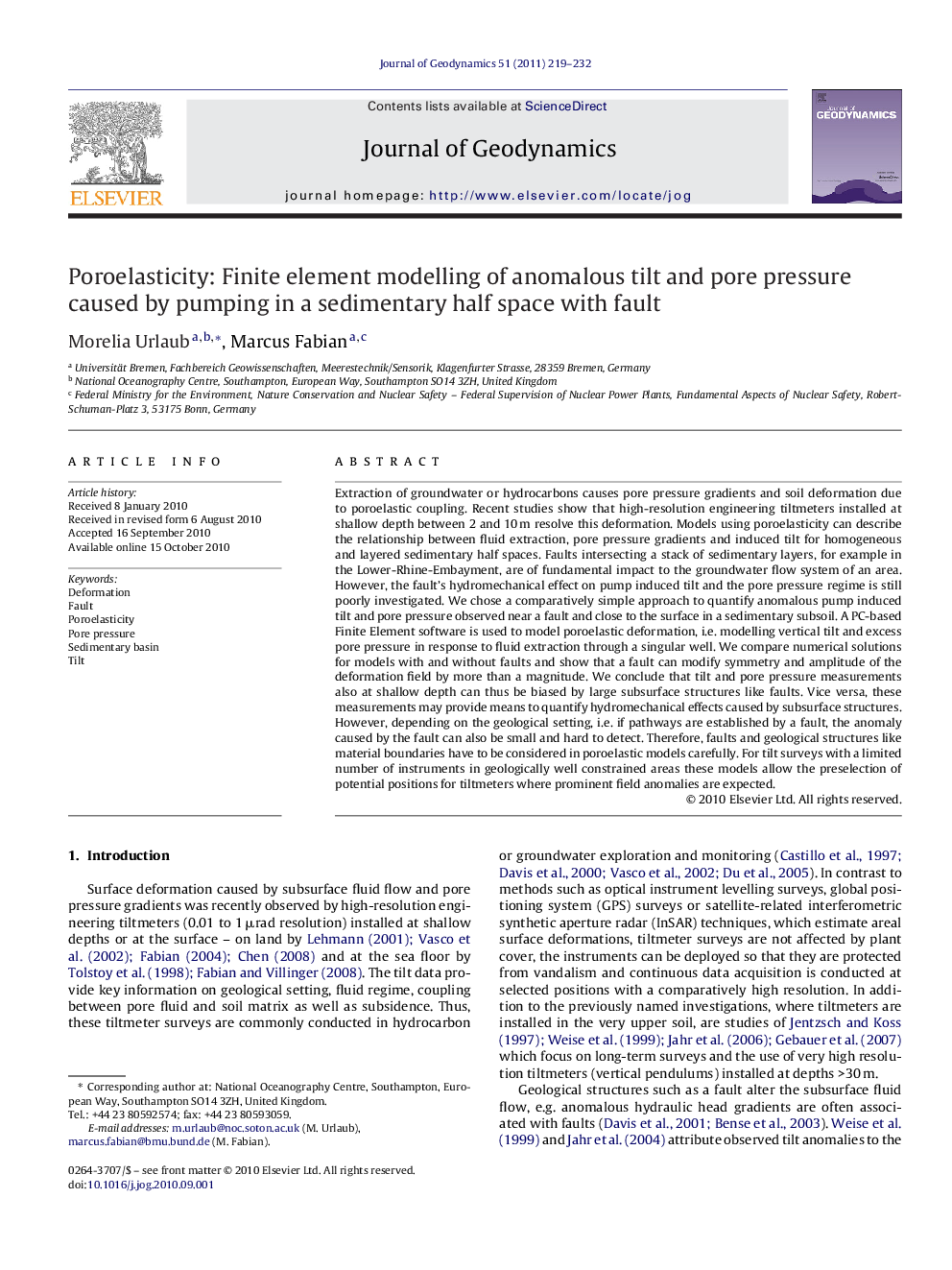| کد مقاله | کد نشریه | سال انتشار | مقاله انگلیسی | نسخه تمام متن |
|---|---|---|---|---|
| 4688404 | 1349842 | 2011 | 14 صفحه PDF | دانلود رایگان |

Extraction of groundwater or hydrocarbons causes pore pressure gradients and soil deformation due to poroelastic coupling. Recent studies show that high-resolution engineering tiltmeters installed at shallow depth between 2 and 10 m resolve this deformation. Models using poroelasticity can describe the relationship between fluid extraction, pore pressure gradients and induced tilt for homogeneous and layered sedimentary half spaces. Faults intersecting a stack of sedimentary layers, for example in the Lower-Rhine-Embayment, are of fundamental impact to the groundwater flow system of an area. However, the fault’s hydromechanical effect on pump induced tilt and the pore pressure regime is still poorly investigated. We chose a comparatively simple approach to quantify anomalous pump induced tilt and pore pressure observed near a fault and close to the surface in a sedimentary subsoil. A PC-based Finite Element software is used to model poroelastic deformation, i.e. modelling vertical tilt and excess pore pressure in response to fluid extraction through a singular well. We compare numerical solutions for models with and without faults and show that a fault can modify symmetry and amplitude of the deformation field by more than a magnitude. We conclude that tilt and pore pressure measurements also at shallow depth can thus be biased by large subsurface structures like faults. Vice versa, these measurements may provide means to quantify hydromechanical effects caused by subsurface structures. However, depending on the geological setting, i.e. if pathways are established by a fault, the anomaly caused by the fault can also be small and hard to detect. Therefore, faults and geological structures like material boundaries have to be considered in poroelastic models carefully. For tilt surveys with a limited number of instruments in geologically well constrained areas these models allow the preselection of potential positions for tiltmeters where prominent field anomalies are expected.
Research highlights▶ Faults can modify symmetry and amplitude of deformation fields. ▶ Geological structures in the subsurface have to be considered in the interpretation of surface deformation. ▶ Easy-to-implement models for preselection of potential tiltmeter positions for shallow tilt-surveys.
Journal: Journal of Geodynamics - Volume 51, Issue 4, April 2011, Pages 219–232